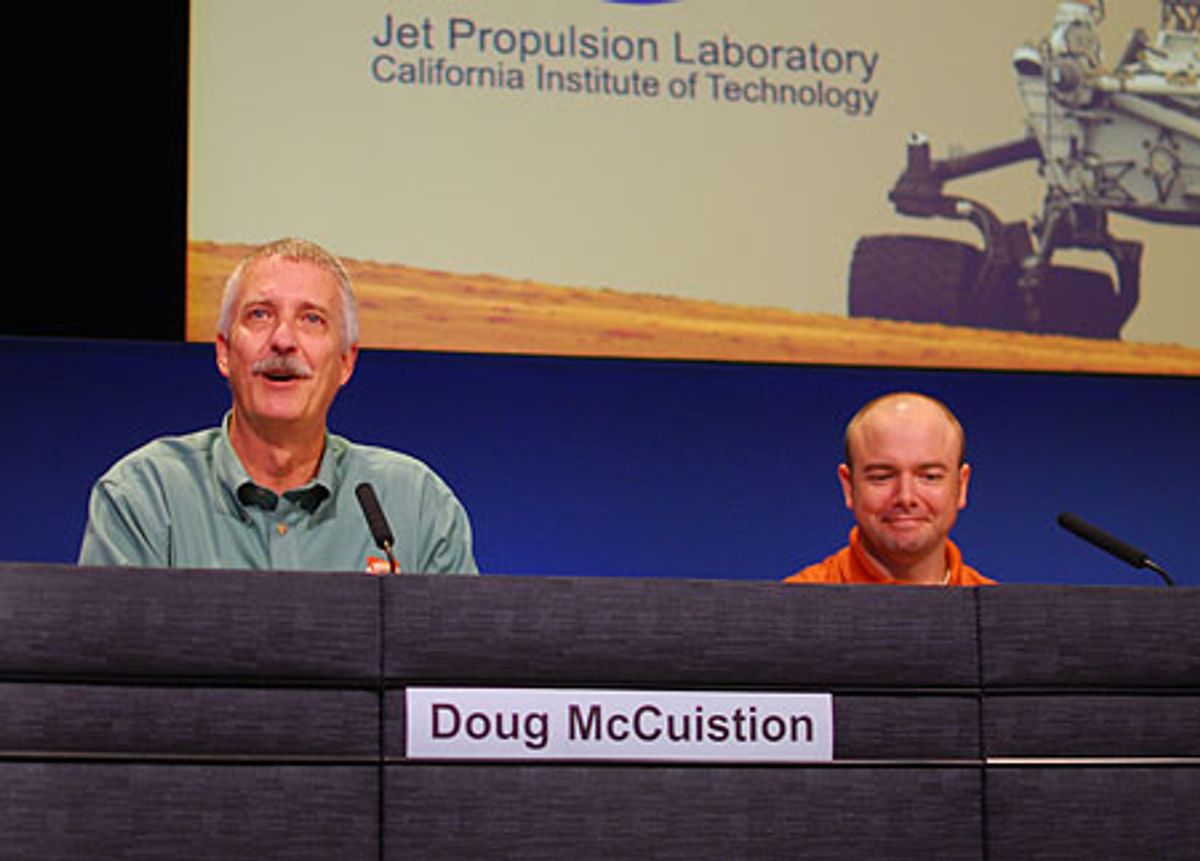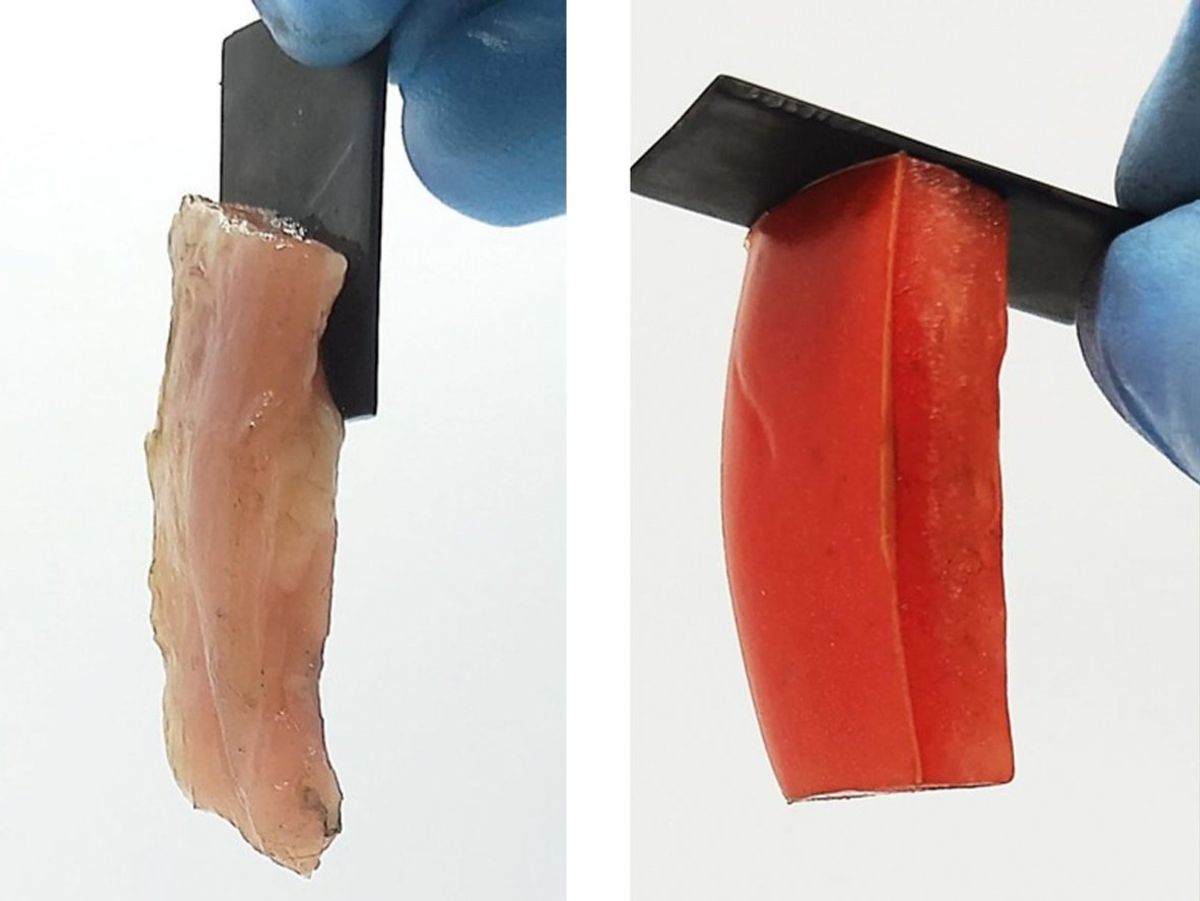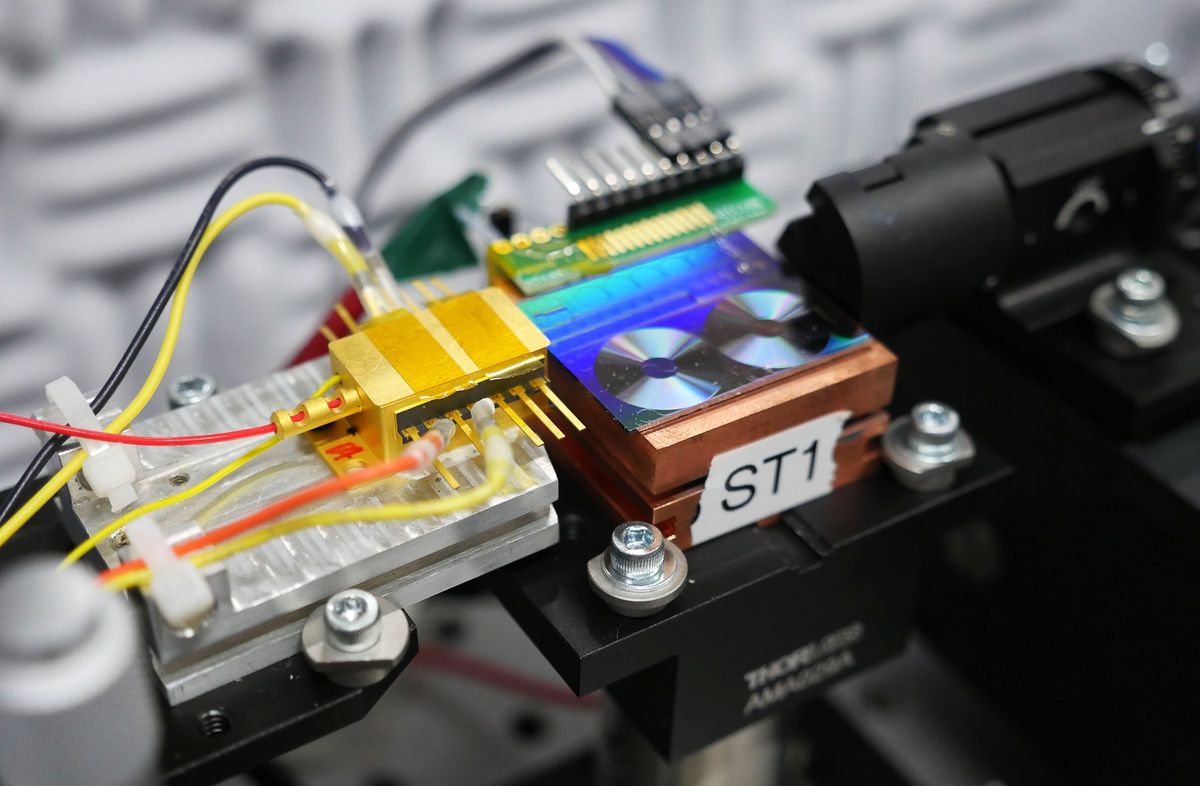JPL held a couple press conferences today, giving a final overview of the EDL (Entry, Descent, and Landing) procedures. Engineers related a whole bunch of interesting info, and we've summarized it all right here for you. It's a good read while you're waiting for that 10:31 PM touchdown.
First up, we heard from Doug McCuistion, Mars Exploration Program director, about the status of communications with MSL. "Odyssey is our primary communications path. It will watch MSL and Curiosity all the way to the ground. That will be the equivalent of a 'bent pipe,' or real time information." As we discussed earlier, this all depends on Odyssey being able to successfully maneuver into the correct attitude to observe MSL: "if we do not have Odyssey in that configuration," McCuistion continues, "the next Odyssey pass will be around two hours later, at around 2:30 AM [PST]. Those are our two best opportunities to understand what the status of the rover is on the surface. The other assets [Mars Reconnaissance Orbiter and Mars Express] will be listening, but we won't know from them for a considerable number of hours later. The key is Odyssey, and it might be Monday morning before we understand what's going on if Odyssey isn't successful." Getting data from MRO, for example, invloves a lengthy data decoding process that will take (at minimum) eight hours, so Odyssey really is the key. We have more coverage
Brian Portock, the MSL mission manager, talked about some of the traditions that JPL engineers have to ensure success during missions like these.
"One of our engineers in the uplink area grew his version of would be a playoff beard, he's got these mutton chops that he's been growing leading up to EDL. Another uplink engineer is going to be holding on to these two trinkets all day, and they kind of relax her. She's done this for other landing events like MER, and if you see her around you'll see her holding these trinkets to help keep her calm during the big event. We have another person, a flight director and systems engineer for MSL, and his tradition, he's had this tradition through all of our systems tests and launch and big events during cruise, he basically comes up with a unique hairstyle every time. He's very well known for this, and a few months ago we had a flight team vote about what his hairstyle should be, and the majority ruled on the stars and strips for him today, so he's got what you'd call a mohawk with some red and blue on top and some stars on the sides. All those things keep people calm, keep the mood light, and result in some good luck for Curiosity."
Another JPL tradition involves passing out peanuts before landings: after Ranger missions 1-6 all failed, peanuts were eaten during the Ranger 7 mission, which was a success. Seeing a clear causal link in play, JPL mission managers now pass out peanuts in mission control ahead of landing maneuvers.
Adam Seltzner, the MSL EDL lead, brought us up to date on the weather at Gale Crater: not too cloudy and not too dusty, which is just the way we want it: "the team is ready, the spacecraft is ready, and it's to the fates. We're rationally confident, emotionally terrified, and ready for EDL." It's definitely good that they're confident, since during the actual landing, the time delay means that the engineers won't be able to do much. And by much, we mean anything at all: "as far as the amount of control that the team has during entry, descent, and landing," Adam said, "it's identical to the control of anybody watching at home." Scary thought.
Speaking of scary thoughts, Adam described the criteria that JPL will use to declare the landing successful:
"We have three different signals we would use to confirm touchdown and we need all three of those things to look right before we say so. One of those is a message from the spacecraft that says 'I touched down, and this is the speed I touched down at and where I think I am.' Another is, the rover has an inertial measurement unit, a gyro and an accelerometer set, and we look at that stream to say the rover's not moving at all. That signal says, 'I think I'm on the ground and I'm not moving.' And then the third is, we wait a safe period of time and confirm we're getting continuous UHF transmission. And frankly, that's there to make sure the descent stage hasn't fallen back down on top of the rover. And when all three of those signals are positive, we declare touchdown confirmation, and to the best of our knowledge, that means curiosity is sitting on the surface. We won't say 'we're done!' Until we get all three of those signals."
Adam added one other little thing that people who get emotionally involved with their robots will find interesting, when asked about the rover's gender: "Curiosity seems to be a better name for a she. She seems like a she." Good, we agree.
Okay, less than an hour now! Make sure you're watching the live feed to follow along!
[ MSL ]
Evan Ackerman is a senior editor at IEEE Spectrum. Since 2007, he has written over 6,000 articles on robotics and technology. He has a degree in Martian geology and is excellent at playing bagpipes.





